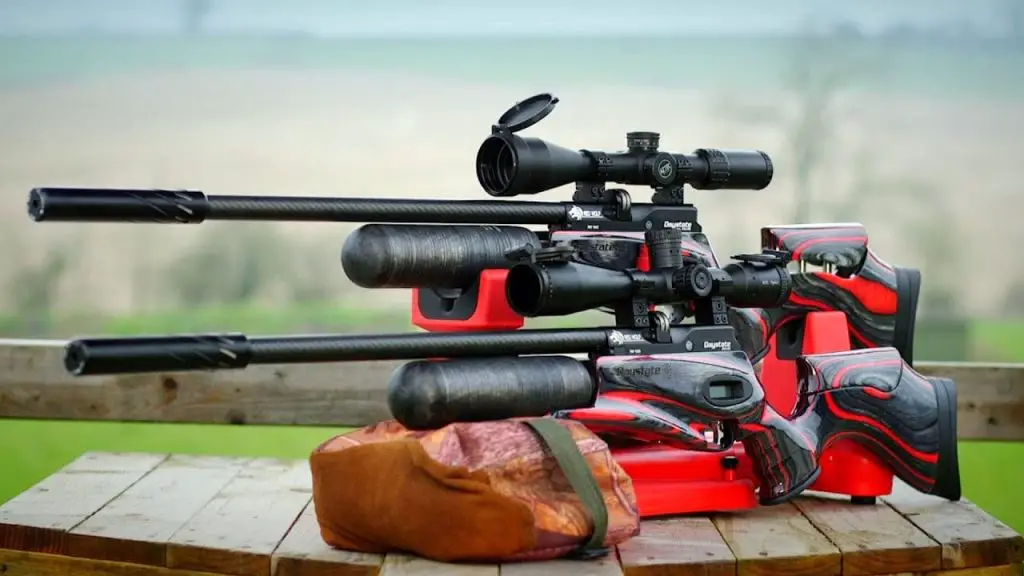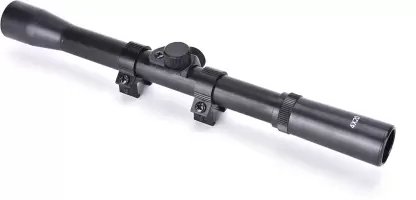Introduction:

Are you a beginner in the world of air rifles? If so, it’s important to familiarize yourself with key terms that will enhance your understanding and help you make informed decisions. This article presents 20 key terms that every air rifle beginner should know. Let’s dive in and explore these important concepts.
Air Rifle:
An air rifle is a type of firearm that uses compressed air or gas to propel a projectile, usually a pellet. These rifles are popular for various purposes, including target shooting, pest control, and small game hunting.
Pellet:

A pellet is an ammunition used in air rifles. It is typically made of lead or alloy and comes in various shapes, such as domed, pointed, or hollow point. Each pellet type offers different characteristics, including accuracy, penetration, and energy transfer.
Caliber:
Caliber refers to the internal diameter of the barrel in an air rifle. It determines the size of the pellets that can be fired. Common air rifle calibers include .177 and .22, with .177 being the most popular choice for beginners due to its wider availability and lower cost.
Velocity:
Velocity is the speed at which the pellet travels after being fired from the air rifle. It is an essential factor that affects accuracy, energy transfer, and trajectory. Higher velocities generally result in flatter trajectories and greater impact energy.
FPS:
FPS stands for “feet per second” and is a unit used to measure the velocity of a pellet. It indicates the speed at which the pellet exits the barrel. When choosing an air rifle, consider the FPS rating as it directly impacts the rifle’s power and performance.
Trigger:
The trigger is the mechanism that initiates the firing of the air rifle. It is important to understand the trigger’s operation and sensitivity for accurate and controlled shooting. Practice proper trigger control to improve accuracy and consistency.
Scope:

A scope is an optical device attached to the air rifle to enhance aiming and target acquisition. It provides magnification and crosshairs to help shooters aim accurately at their intended targets. Choose a scope suitable for your shooting needs and consider factors like magnification, reticle type, and quality.
Parallax:
Parallax refers to the apparent shift in the position of the target when the shooter’s eye is not perfectly aligned with the scope’s optical axis. Understanding and adjusting for parallax is crucial for precise shooting at different distances.
Holdover:
Holdover is the technique of aiming higher or lower to compensate for bullet drop at longer distances. As the pellet travels, it experiences the force of gravity, causing it to drop. Learning holdover techniques helps shooters maintain accuracy at varying distances.
Zeroing:
Zeroing is the process of adjusting the scope to align the point of impact with the crosshairs. It ensures that the pellet hits the intended target at a specific distance. Proper zeroing is vital for consistent and accurate shooting.
MOA:
MOA stands for “Minute of Angle” and is a unit of measurement used for adjusting scopes. It represents a specific angular measurement, typically 1 MOA being equal to 1.047 inches at 100 yards. Understanding MOA helps shooters make precise adjustments when zeroing their scopes.
Recoil:
Recoil is the backward movement of the air rifle after firing a pellet. It is important to manage recoil to maintain shooting accuracy and reduce discomfort. Proper grip, body position, and follow-through techniques can help control recoil effectively.
Break Barrel:
Break barrel air rifles feature a hinged barrel that can be cocked by breaking it open and then closing it. This action compresses air or gas, readying the rifle for the next shot. Break barrel rifles are popular due to their simplicity and affordability.
Pump Action:
Pump action air rifles require manual pumping to compress air or gas before each shot. They offer consistent power and are ideal for target shooting or pest control. Pump action rifles provide an opportunity to fine-tune power levels based on shooting requirements.
Single Shot vs. Multi-shot:
Single-shot air rifles can fire only one pellet at a time and require manual reloading after each shot. Multi-shot air rifles, on the other hand, have mechanisms that allow multiple pellets to be loaded and fired without manual intervention. Consider your shooting needs and preferences when choosing between single-shot and multi-shot rifles.
Noise Level:
Noise level is an important consideration, especially for backyard shooting or areas with noise restrictions. Air rifles tend to be quieter than traditional firearms, but some models may still produce a noticeable sound. Choose an air rifle with a noise level that suits your shooting environment.
Backstop:
A backstop is a safety measure used to prevent pellets from traveling beyond the intended target area. It can be a physical object like a bullet trap or a natural barrier such as a densely wooded area. Select an appropriate backstop to ensure safe shooting.
Maintenance:
Regular maintenance is crucial to keep your air rifle in optimal condition. Clean the barrel, lubricate moving parts, and check for any signs of wear or damage. Proper maintenance ensures consistent performance and extends the lifespan of your air rifle.
Energy Transfer:
Energy transfer refers to the amount of kinetic energy transferred from the pellet to the target upon impact. It is influenced by factors such as pellet weight, velocity, and construction. Understanding energy transfer helps determine the effectiveness of an air rifle for different shooting applications.
Powerplants:
The powerplant of an air rifle refers to the mechanism that generates the force to propel the pellet. Common types of powerplants include spring-piston, gas-piston, CO2, and pre-charged pneumatic (PCP). Each powerplant has its advantages and considerations, affecting factors such as power, consistency, and maintenance requirements.
Conclusion:
Congratulations! You have gained valuable knowledge about 20 key terms every air rifle beginner should know. Understanding these terms will empower you to make informed decisions, enhance your shooting skills, and enjoy your air rifle experience to the fullest. Make sure you don’t make any newbie mistake early on in your journey.
FAQs (Frequently Asked Questions):
- Q: How far can an air rifle pellet travel?
- A: The maximum range of an air rifle pellet depends on factors such as caliber, velocity, and trajectory. Most air rifles are effective within a range of 50 to 100 yards.
- Q: Do I need a license to own an air rifle?
- A: In many countries, owning an air rifle does not require a license. However, it’s important to familiarize yourself with the local laws and regulations regarding air rifle ownership and usage.
- Q: What is the recommended maintenance routine for an air rifle?
- A: Regularly clean the barrel, lubricate moving parts, and inspect for any signs of wear or damage. Follow the manufacturer’s guidelines for specific maintenance instructions.
- Q: Can I use an air rifle for hunting?
- A: Air rifles are suitable for small game hunting and pest control. However, it’s important to check local hunting regulations and ensure that your air rifle meets the necessary power and caliber requirements.
- Q: Can I use any type of pellet in my air rifle?
- A: It is essential to use pellets specifically designed for air rifles. Different types and calibers of air rifles may require specific pellets for optimal performance.
Remember, mastering the key terms discussed in this article will lay a strong foundation for your journey as an air rifle enthusiast. So, get out there, practice, and enjoy the exciting world of air rifles!

I’m an avid air rifle enthusiast and expert reviewer for this website. With a deep passion for air rifles and keen attention to detail, I provide honest and comprehensive reviews. Whether you’re a beginner or a seasoned shooter, trust me to guide you towards the perfect air rifle for your needs.
